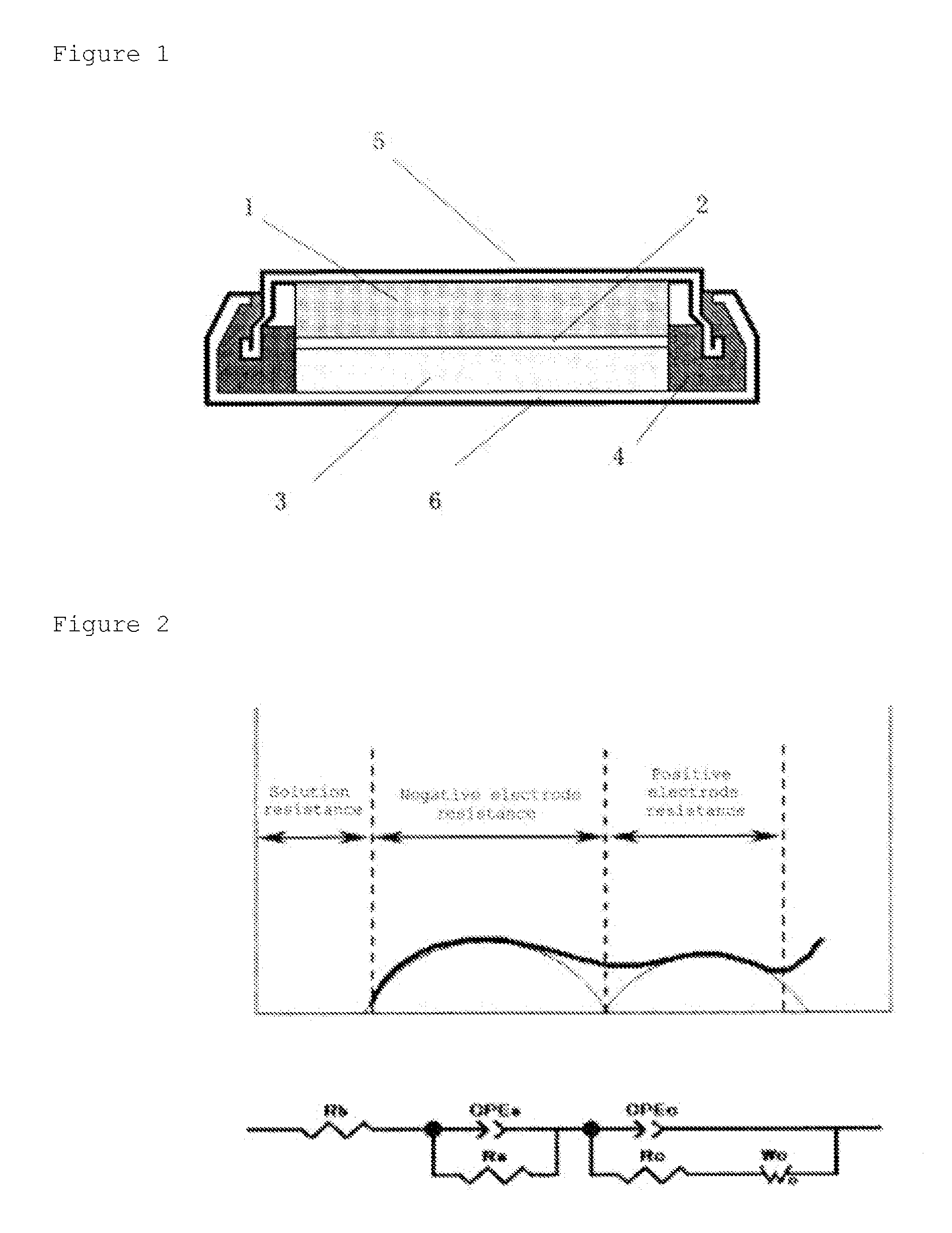Positive electrode active material, method for producing same, and non-aqueous electrolyte secondary battery using same
a technology of active materials and positive electrodes, which is applied in the direction of nickel compounds, cell components, sustainable manufacturing/processing, etc., can solve the problems of low discharge capacity, unstable supply and large price fluctuation, and high cost of lithium cobalt used in lithium cobaltate. , to achieve the effect of high capacity, superior heat stability and li diffusion resistance, and low cos
- Summary
- Abstract
- Description
- Claims
- Application Information
AI Technical Summary
Benefits of technology
Problems solved by technology
Method used
Image
Examples
example 1
[0106]A positive electrode active material composed of a lithium nickel composite oxide was produced by the following series of steps including the step for preparing a nickel hydroxide, the step for producing a nickel oxide, the step for firing, the step for water washing and drying, and still more by preparing a coin battery using this as a positive electrode material, it was evaluated using impedance. It should be noted that each raw material was weighed so that molar ratio of each metal component of the lithium nickel composite oxide after firing attains Ni:Co:Al:Li=0.82:0.15:0.03:1.02.
(1) The Step for Preparing a Nickel Hydroxide
[0107]Firstly, an aqueous solution was produced by mixing nickel sulfate hexahydrate (produced by Wako Pure Chemical Industries, Ltd.), cobalt sulfate heptahydrate (produced by Wako Pure Chemical Industries, Ltd.) and aluminum sulfate (produced by Wako Pure Chemical Industries, Ltd.), so as to attain the above molar ratio. This aqueous solution was drop...
example 2
[0120]A positive electrode active material was obtained similarly as in Example 1, except that nickel hydroxide was further subjected to oxidation treatment by the addition of sodium hypochlorite to convert to nickel oxyhydroxide in Example 1, and evaluated. Results are shown in Table 1.
example 3
[0121]A positive electrode active material was obtained similarly as in Example 1, except that a nickel oxide was subjected to oxidative roasting at 900° C. to convert to the nickel hydroxide in Example 1, and evaluated. Results are shown in Tables 1 and 2.
PUM
| Property | Measurement | Unit |
|---|---|---|
| temperature | aaaaa | aaaaa |
| molar ratio | aaaaa | aaaaa |
| vaporization temperature | aaaaa | aaaaa |
Abstract
Description
Claims
Application Information
 Login to view more
Login to view more - R&D Engineer
- R&D Manager
- IP Professional
- Industry Leading Data Capabilities
- Powerful AI technology
- Patent DNA Extraction
Browse by: Latest US Patents, China's latest patents, Technical Efficacy Thesaurus, Application Domain, Technology Topic.
© 2024 PatSnap. All rights reserved.Legal|Privacy policy|Modern Slavery Act Transparency Statement|Sitemap


